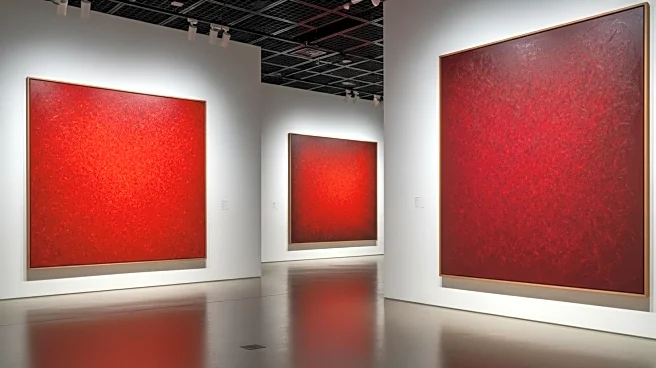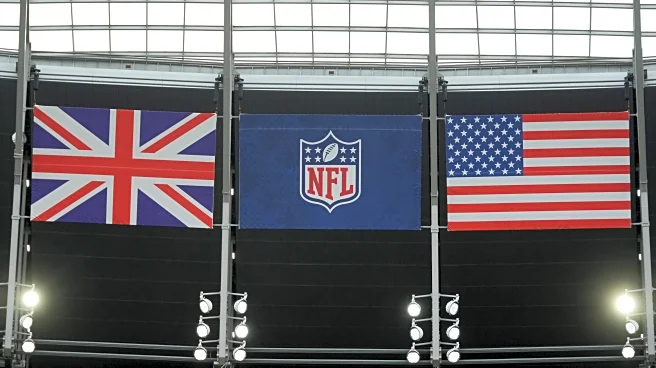What's Happening?
The Tate Modern in London is currently hosting an exhibition titled 'Nigerian Modernism,' which features the works of over 50 Nigerian artists. This exhibition spans from 1910 to the 1990s and includes a variety of art forms such as bronze casting, mural painting, and wood carving, blended with European styles. The exhibition highlights Nigeria's journey from a British colony to an independent nation, including the turbulent period of the Biafran war from 1967 to 1970. Artists from the Nsukka Art School, a significant art movement in Nigeria, are prominently featured. The exhibition aims to showcase the collective and individual artistic endeavors of Nigerian artists, many of whom are part of Nigeria's vast diaspora.
Why It's Important?
This exhibition is significant as it brings global recognition to Nigerian modernism, a movement that has been underrepresented on the international stage. It highlights the cultural and historical evolution of Nigeria through art, offering insights into the country's socio-political changes over the decades. The exhibition not only celebrates the artistic achievements of Nigerian artists but also provides a platform for dialogue about the role of art in cultural identity and historical narrative. It underscores the importance of preserving and promoting diverse cultural expressions in the global art scene.
What's Next?
The 'Nigerian Modernism' exhibition will run at the Tate Modern until May 10 of the following year. It is expected to attract art enthusiasts and scholars interested in African art and history. The exhibition may inspire further exploration and documentation of Nigerian art movements, potentially leading to more exhibitions and academic studies. It also sets a precedent for other underrepresented art movements to gain visibility on the global stage, encouraging museums and galleries worldwide to diversify their collections and exhibitions.
Beyond the Headlines
The exhibition at Tate Modern not only highlights the artistic talents of Nigerian artists but also raises questions about the categorization and labeling of art movements. Artists like Muraina Oyelami express indifference to labels such as 'modernism,' suggesting that the essence of art transcends such classifications. This perspective invites a broader discussion on how art is perceived and valued across different cultures and time periods. The exhibition also emphasizes the role of art in fostering a sense of community and collective identity among artists, as noted by the exhibition's curator, Osei Bonsu.











